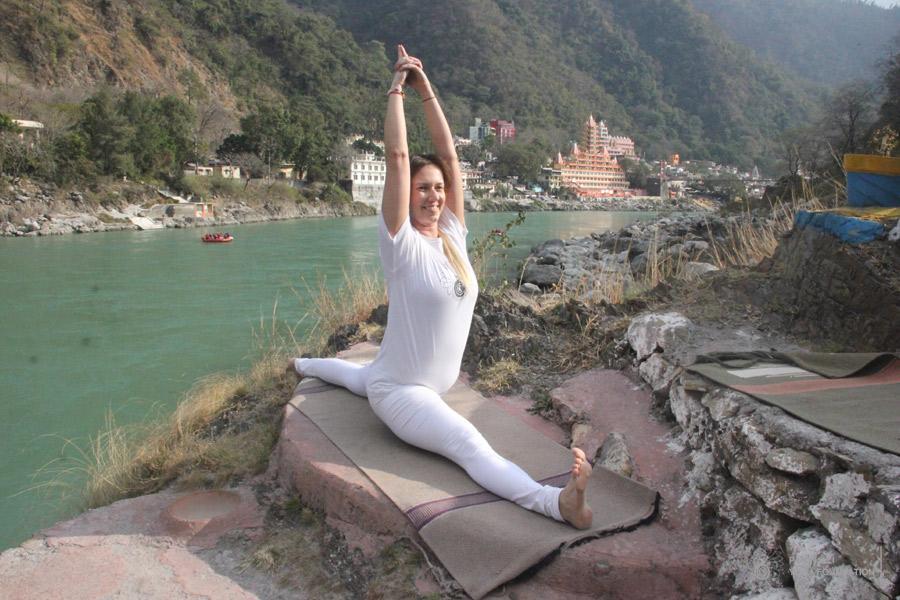Introduction: Addressing the Most Common Misconceptions About Yoga
One of the biggest misconceptions about yoga is that it’s only for the naturally flexible. This idea can discourage many people from trying yoga, especially beginners who feel they aren’t flexible enough to participate. However, this couldn’t be further from the truth. Flexibility is not a requirement to start practicing yoga—it’s a result that develops with consistent practice over time.
The essence of yoga lies not in achieving perfect postures but in embracing the journey of personal growth, awareness, and inner peace. In this article, we will explore why flexibility is not a prerequisite for yoga, how progress matters more than perfection, and share inspiring stories of people who benefited from yoga despite physical limitations.
Why Flexibility is Not a Prerequisite for Yoga
Many people feel hesitant to join a yoga class because they can’t touch their toes or perform complex postures. However, yoga is not about twisting yourself into difficult shapes or achieving acrobatic feats. At its core, yoga is a practice of mindfulness that integrates the body, breath, and mind.
Flexibility is just one of the many benefits that yoga offers, but it is neither the starting point nor the primary goal. Strength, balance, mental focus, and emotional stability are equally important aspects of yoga practice. Beginners can start with basic postures and gradually build their range of motion over time.
Even experienced practitioners were once beginners who struggled with tight muscles. Yoga instructors encourage students to work within their personal limits, using props and modifications when needed. This inclusive nature makes yoga accessible to everyone—regardless of age, fitness level, or flexibility.
Focus on Progress, Not Perfection: Building Strength, Awareness, and Patience
The journey of yoga is about personal growth, not about perfecting a pose. In yoga, the emphasis is on small improvements over time. Progress is measured by how mindfully you move, how aware you are of your breath, and how patient you become with yourself—not by how far you can stretch.
Yoga teaches patience and self-acceptance, qualities that are essential in a fast-paced world. Practitioners are encouraged to embrace where they are at the moment without self-judgment. The philosophy of yoga emphasizes that every person’s journey is unique.
Building strength, stability, and awareness are fundamental aspects of the practice. Poses like the Warrior series and Downward Dog help develop physical endurance, while breathing techniques enhance mental clarity. By practicing regularly, students gain both physical and emotional resilience, regardless of their initial level of flexibility.
Stories of People Who Found Yoga Despite Physical Challenges
The beauty of yoga lies in its adaptability—it is not confined to a specific body type or fitness level. There are countless inspiring stories of individuals who found peace and strength through yoga despite physical challenges.
Take the example of Arthur Boorman, a disabled veteran who struggled with obesity and chronic pain. His body was stiff, and he couldn’t stand without assistance. However, through consistent practice of modified yoga postures, he not only lost weight but also regained mobility and the ability to walk again.
Similarly, many senior citizens with limited mobility have benefited from chair yoga—a form of yoga practiced while seated or with the support of a chair. For them, yoga provides a way to improve joint health, boost circulation, and develop a sense of well-being without requiring extreme flexibility.
These examples highlight that yoga is for everyone. Whether you are dealing with chronic pain, recovering from injury, or just starting on your fitness journey, yoga can meet you where you are.
How Consistent Practice Leads to Flexibility Over Time
While flexibility isn’t a requirement to start yoga, it is a natural outcome of regular practice. As you move through poses mindfully, your muscles begin to release tension, and your joints become more mobile. The key is consistency—not intensity.
When you practice yoga regularly, even just a few minutes each day, your body gradually becomes more open and adaptable. Postures such as Forward Fold, Pigeon Pose, and Cobra stretch tight muscles, while twists and hip-openers release tension stored deep within the body. Over time, your body starts to feel more fluid and balanced.
However, it’s important to approach flexibility with patience and respect for your body’s limits. Pushing too hard can lead to injuries, which contradicts the spirit of yoga. Listening to your body’s signals and progressing at your own pace is crucial for sustainable growth.
Conclusion: Yoga Welcomes Everyone, Regardless of Where They Start
Yoga is not reserved for those who are naturally flexible or fit—it is for everyone who is willing to explore and grow, both physically and mentally. Whether you’re a complete beginner or an experienced practitioner, yoga meets you exactly where you are.
The true essence of yoga lies in the journey, not the destination. It teaches self-acceptance, patience, and mindfulness—qualities that extend beyond the mat and into everyday life. Flexibility will come with time, but the most important thing is to start, stay consistent, and embrace the process.
Remember, yoga is not about how far you can stretch—it’s about how much you can grow, both inside and out.


